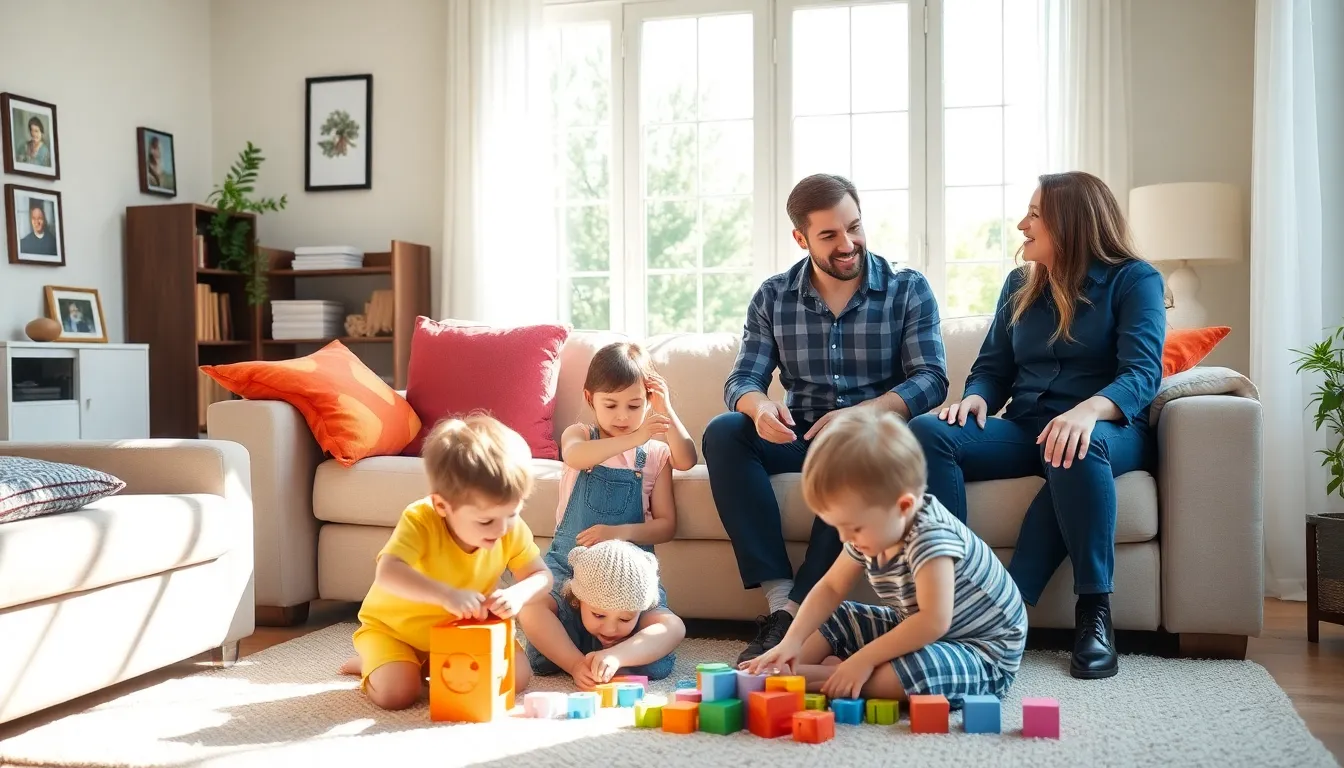Table of Contents
ToggleEver wonder why the term “nuclear family” pops up so often in conversations about family structures? The phrase might conjure images of a picturesque home with two parents and their adorable kids, but it’s more than just that. In this text, we’ll dive deep into the definition, characteristics, and even the historical context surrounding nuclear families. So, buckle up as we uncover the ins and outs of this common family unit, all while keeping a light-hearted tone.
Definition of a Nuclear Family

A nuclear family is typically defined as a family unit consisting of two parents and their children living together in one household. This structure stands in contrast to other family arrangements, like extended families, where multiple generations live under the same roof or close by. It represents the most traditional concept of family in many cultures, particularly in the Western world. So, whether it conjures images of family dinners or Disney movie nights, this structure has a clear definition.
Characteristics of a Nuclear Family
Nuclear families share several common characteristics. First and foremost, they usually consist of two adults, commonly referred to as the parents, who may be married or cohabiting. These families generally emphasize emotional support, partnership, and collaboration in parenting. Also, children in these families are often biologically related to at least one of the parents, fostering a sense of belonging.
Another key trait is that nuclear families typically live in their own separate homes, emphasizing independence from other relatives. In essence, this setup creates an environment where family members can thrive by offering both structure and intimacy.
Historical Context of the Nuclear Family
The nuclear family has evolved significantly over time. In earlier societies, kinship systems often dictated living arrangements, placing multiple generations and extended family members together. But, the rise of industrialization in the 18th and 19th centuries altered traditional family dynamics. With more individuals moving to cities for work, nuclear families began to take shape.
This trend was reinforced throughout the 20th century, particularly after World War II, when societal norms started promoting smaller family units as ideal. The post-war boom further solidified this structure through government policies and popular culture, often celebrating the “American Dream” of a white picket fence and a cozy nuclear family.
Benefits of a Nuclear Family Structure
Nuclear families offer several benefits that can be appealing. For one, they allow for more focused parenting. With two parents typically in the household, there’s a shared responsibility in the upbringing and guidance of children, which often results in emotional stability.
Also, this family structure encourages closeness and intimacy among members. Family dinners and game nights become staples, creating lasting memories and fostering strong bonds. Economically, nuclear families can also be more efficient, they usually share resources and living expenses, which can lead to overall financial stability.
Challenges Faced by Nuclear Families
Even though their many benefits, nuclear families also face unique challenges. The pressure for parents to balance work and home life can lead to stress and burnout. In some cases, even with two parents, managing responsibilities can feel overwhelming, particularly when it comes to childcare and household management.
Also, nuclear families may lack the broader support network that extended families can offer. This isolation can be problematic, especially in times of crisis. For example, single-income nuclear families might feel the strain of financial instability without the help of extended relatives.
The Nuclear Family in Modern Society
In today’s society, the definition of a nuclear family continues to evolve. Increasingly, diverse family structures, including single-parent households and same-sex couples with children, challenge the traditional notion of what a nuclear family is. Though the conventional model remains prevalent, society is moving toward a more inclusive understanding of family.
Also, technological advancements and remote work options are creating new ways for families to connect and adapt. Virtual gatherings and online communities can help bridge the gap where traditional family support systems may be lacking.





